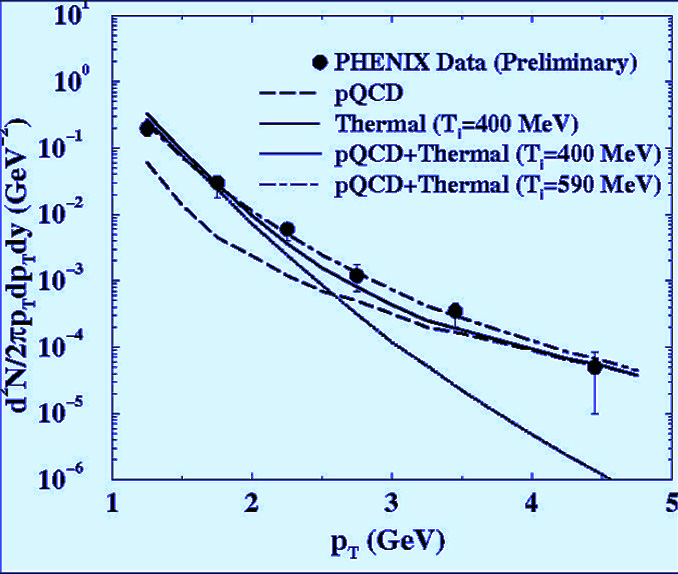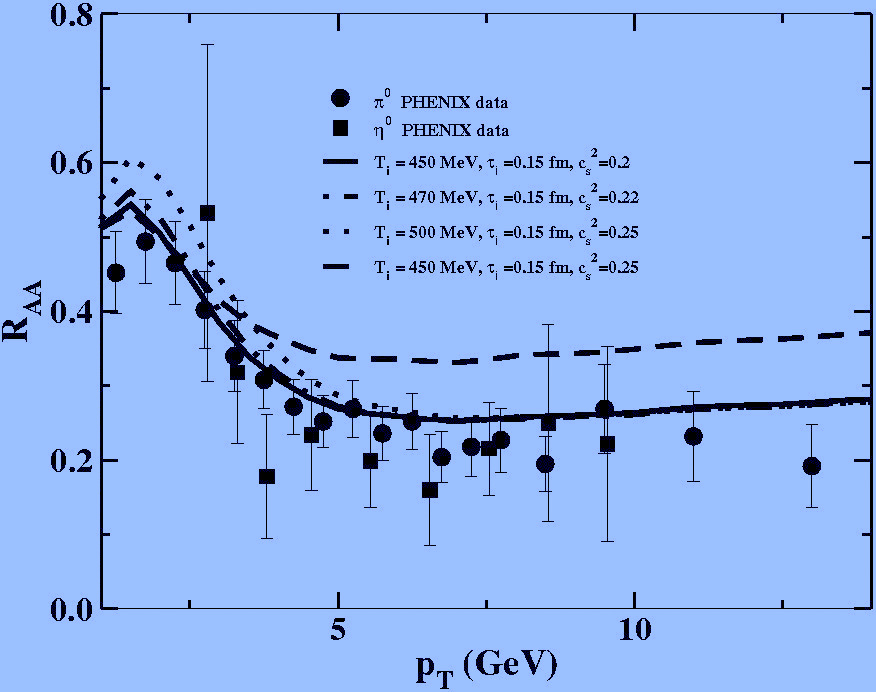Research
Ultra Relativistic Heavy ion Collision(Theory)
Preamble
One of the fundamental quest of relativistic heavy ion collisions is to probe the properties of matter at high temperaure and/or density similar to what existed in the early universe and also in other exotic astrophysical objects such as neutron star or strange compact objects or stars with quark cores. Inextricably tied with these are the detailed questions of nuclear equation of states, confinement-deconfinement phase transitions, possibility of various symmetry restoration which normally is broken in the present universe. Furthermore, such investigations also provide a complimentary test of the theory of strong interactions , viz. quantum chromodynamics at finite temperature and density, which, in itself, is important. In their ground state, nuclei behave in a manner analogous to incompressible fluid. However, a compressed state is required before some of the fundamental properties of nuclear matter reveal themselves. Relativistic heavy-ion collisions is the only way to produce compressed nuclear matter in the laboratory. Thus, one could easily realize that this is a transient phase with relatively short time. While properties of normal nuclear matter can be explored in p-A or e-A collisions in facilities like KEK, Japan or in Jefferson Lab, USA, superdense baryonic matter (moderate temperature) can be realised at GSI. Another interesting domain of phase space is at high temperature and low baryon density which is more appropriate to mimic early universe scenario is realized in ultra-relativistic heavy ion collisions at Super Proton Synchrotron (SPS) at CERN, Relativistic Heavy Ion Collider (RHIC) at Brookhaven National Laboratory and (Large Hadron Collider (LHC) at CERN. The reason being that the latter experiments offer the opportunity to study the properties of matter at high temperature and low density.
Present Status of the Field
Two broad issues in the area of high energy heavy ion collisions are (i) medium modifications of the hadronic states, in particular pole shifts and/or spectral broadening of the hadrons and (ii) Formation of quark gluon plasma. There are experimental indications that hadronic masses are reduced both in normal nuclear matter (KEK, HADES, JLab) and hot/dense medium as reported by CERES collaboration at CERN, SPS. However, consistent theoretical explanation is yet to be established. The cleanest signal to probe the properties of vector mesons and also that of the plasma is electromagnetic radiations. The existing data for dilepton and photon spectra at SPS clearly support the notion of in-medium modifications of hadrons. Furthermore, they also prove to be sensitive to the collision dynamics as they are emitted at all stages of the evolution. Medium effects also have a role to play in determining the equation of state. Various signals from QGP depend upon the space-time evolution which is very sensitive to the equation of state of the system. Whether or not quark gluon plasma is really formed at RHIC is still debatable. But all indications show that the matter created immediately after the collision at such ultra-relativistic energies is very different from what has been observed at lower colliding energies (SPS). First comes the creation of a near perfect fluid with viscosity/entropy ratio ~ 1/10 (less viscous than liquid Helium), the lowest so far observed in nature. In addition RHIC also observes another novel phenomenon known as `Jet Quenching' leading to development of a completely new subject of `jet tomography'. This, actually is, related to the final state energy loss of the parton jets before being fragmented into hadrons which cannot be explained without invoking the notion of bulk partonic medium. The other puzzle of RHIC is the issue of early thermalization required to explain flow data. If the measurements of anisotropic flow really indicate faster thermalization or it is instability driven rapid isotropization (Webel instability) or some other dynamics are open questions. Interesting development in this context has been the proposed bottom up thermalization scenario where equilibration proceeds from initial 'color glass condensate' state in a very different way than conventional picture that existed till recently. Heavy quarkonium suppression due to the formation of quark gluon plasma is considered to be an important probe. Currently available data from SPS suggests no conclusive evidence about the formation of QGP. RHIC is expected to settle this question once data for various observables become available. More focused and systematic study of heavy quarkonium suppression is planned at ALICE, LHC where dedicated experiments have been proposed for this purpose.
Research Activities
1. Jet quenching
Jet quenching is considered to be one of the most promising tools to probe the very early stages of the relativistic heavy ion collisions. Particularly the high $p_T$ suppression of the various hadron species and non-observation of the same in $d$-$Au$ collisions clearly indicate this to be the final state effect which can be attributed to the partonic energy loss during the passage of the jets through hot and dense chromomagnetic plasma. We are deeply involve in calculation partonic energy loss and its applications in the context of high transverse momentum hadrons and photons.
2. Electromagnetic Probes Analysis of recent measurements of PHENIX single photon data.

High transverse momentum photons from jet-plasma interaction. Photons from anisotropic plasma.
3. Nucleon-nucleon interaction and charge symmetry breaking
Nuclear force is neither charge symmetric (CS) nor charge independent as is commonly assumed (CI). Charge independence means invariance of the nucleon-nucleon interaction under rotation in the isospin space, charge symmetry on the other hand implies symmetry between the pp and nn states. We show how can one construct realistic potential which violates CI and CS. Furthermore, we also estimate the contribution of such symmetry breaking interactions in the binding energy of finite nuclei or in the scattering length of pp and nn interaction. We also investigate the effect of the density dependent mixing of various isospin states on the strengh of such interactions.
4. Fermi Liquid Theory in nuclear matter
We study the properties of dense nuclear matter by invoking the formalism of relativistic Fermi liquid theory (RFLT). Various investigations have been undertaken to study the properties of both nuclear and quark matter. Recently we have shown how the various observables like incompressibility or sound velocity, binding energy of nuclear matter can be calculated within the framework of RFLT. Furthermore, we extend the formalism to study the properties of polarized dense quark matter and the possible para-ferro phase transition at finite density.